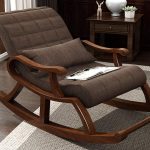Don’t Toss It Yet! How to Repair Mirror Desilvering and Breathe New Life into Your Tarnished Mirror
We’ve all seen it – a once-pristine mirror slowly succumbing to the unsightly effects of desilvering. Those dark spots creeping in from the edges, the telltale sign of moisture wreaking havoc on the reflective backing. It can be tempting to resign yourself to replacing the mirror altogether, but fear not! There are ways to address desilvering and extend the lifespan of your cherished piece.
This guide delves into the world of mirror desilvering, exploring both repair methods and preventative measures to keep your mirrors sparkling for years to come.
Understanding Mirror Desilvering: The Enemy at the Edges
Desilvering, also known as mirror rot or oxidation, is the deterioration of the reflective backing on a mirror. This typically occurs when moisture seeps between the glass and the backing, causing the reflective coating to break down.
Here’s a breakdown of the common culprits behind desilvering:
- High-Moisture Environments: Bathrooms are prime locations for desilvering due to frequent exposure to steam and condensation.
- Improper Sealing: Unframed mirrors, or those with failing sealant around the edges, are more susceptible to moisture intrusion.
- Low-Quality Mirrors: Budget mirrors often use inferior reflective coatings that are more prone to degradation.
Repairing Mirror Desilvering: A DIY Approach (with Limitations)
While a complete restoration might require professional intervention, there’s a clever DIY method to address mild desilvering and improve the mirror’s appearance. This method utilizes a common household item: WD-40.
Important Note: It’s crucial to understand that this approach won’t completely eliminate desilvering or restore the backing to its original state. However, it can effectively remove rust (a common byproduct of desilvering) and significantly improve the mirror’s aesthetics.
What You’ll Need:
- WD-40 Multi-Use Product
- Old Toothbrush
- Cleaning Sponge
- Paper Towels
Here’s How to Do It:
- Target the Source: Direct the WD-40 straw under the mirror, aiming for the gap where the moisture likely seeped in (often the bottom edge). Spray a light, even coat along the base of the mirror.
- Let it Dwell: Allow the WD-40 to sit for 10 minutes, giving it time to loosen any rust particles.
- Scrub Away the Rust: Employ the old toothbrush to scrub the underside of the mirror along the join, focusing on areas with visible rust. The WD-40 should help dislodge the rust, making it easier to remove.
- Repeat and Rinse: Apply another round of WD-40 and scrub again until the rust is gone. Wipe away any excess WD-40 residue from the mirror surface, sides, and surrounding area with a clean, damp sponge.
Safety Precautions:
- WD-40 is flammable, so ensure proper ventilation while working.
- Avoid direct contact with your eyes or skin.
- Wear gloves if you have any concerns about skin sensitivity.
Expected Outcome: While the mirror’s backing won’t be magically restored, the WD-40 treatment should effectively remove rust stains, leaving the mirror looking significantly better. The reflective quality might be slightly diminished in the affected areas, but from a normal viewing distance, the improvement should be noticeable.
Preventing Mirror Desilvering: An Ounce of Prevention is Worth a Pound of Cure
The good news is that mirror desilvering is largely preventable with some proactive measures. Here are key strategies to keep your mirrors gleaming:
- Embrace Sealing: Framed mirrors with a proper sealant around the edges are far less susceptible to moisture intrusion. If you have unframed mirrors, consider adding a sealant yourself or getting them framed professionally.
- Location, Location, Location: When possible, avoid placing mirrors in areas with constant high humidity, such as directly above bathroom sinks or showers. Opt for placement in rooms with good ventilation.
- Moisture Management: In moisture-prone environments like bathrooms, promote proper ventilation by opening windows or using exhaust fans after showering or bathing.
- Regular Cleaning: Clean your mirrors regularly with a microfiber cloth and a suitable cleaning solution. This removes dust and dirt buildup that can trap moisture.
Should You Call in the Professionals?
- Extensive Desilvering: If the desilvering covers a large portion of the mirror’s surface, significantly impacting its reflectivity, a professional restoration might be the best course of action. Professionals have access to specialized techniques and materials to potentially restore the backing or replace the reflective layer.
- Cracked or Damaged Glass: If the mirror itself has cracks or other physical damage, a DIY repair is not recommended. Professionals can assess the damage and determine if a repair or replacement is necessary.
- Antique Mirrors: For antique mirrors with sentimental value, it’s always best to consult a professional restoration service. They have the expertise and experience to handle delicate repairs while preserving the mirror’s antique character.
Conclusion: Taking Care of Your Mirrors
Mirrors are a vital element in any home, adding light, dimension, and a touch of elegance. By understanding the causes of desilvering and implementing the proper preventative measures, you can ensure your mirrors continue to function beautifully for years to come.
For mild cases, the WD-40 trick offers a handy DIY solution to improve the mirror’s appearance. Remember, this is a temporary fix, and for more extensive damage or valuable antiques, seeking professional help is always recommended. With a little care and attention, your mirrors will continue to reflect your style and enhance the beauty of your home.
By following these preventative steps, you can significantly reduce the risk of desilvering and ensure your mirrors maintain their reflective beauty for years to come.









